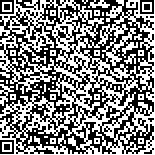Abstract:The Xikuangshan antimony ore field is situated at the northern margin of Baimashan-Longshan clustered uplift zone, the southeastern limb of Neocathaysian Xuefengshan uplift zone, and the northern extremity of the ancient central Hunan sea basin formed during Devonian to Triassic. The strata exposed in this area are a suite of sedimentary carbonate rocks intercalated with clastic rocks belonging to Qiziqiao formation of Middle Devonian, Shetianqiao formation and Xikuangshan formation of Upper Devonian, and Yanguan stage of Lower Carboniferous. Structure: Fhe main fold is the Xikuangshan anticline. lts western limb has been cut and hence destroyed by a big fault F75 and its eastern limb has been modified by a N-S torsion stress of late stage into several groups of secondary folds echeloning upright. The leading faults consist predominantly of a NNE trending longitudinal tension fault (F75) and a great faulted zone in the west composed of a series of NE-trending faults (F3, F71 and F72) located in the foot wall of F75 and intersecting F75 at acute angles to form a pattern like the letter. Of less importance, there exist a pair of conjugate faults running NNW and NEE, and stretch-tension faults trending nearly EW. Igneous rocks: Within 25 km2 of the ore field, no igneous rocks have so far been found apart from a kersantite dyke infilling a NNE fissure, the age of which is dated isotopically at 119 million years, hence belonging to Late Yenshanian Orogeny. Ore deposit: The antimony ore bodies occur in some secondary brachy anticlines in the foot wall of the west great faulted zone, its country rock being silicified limestone of middle to lower Shetianqiao Formation. Controlled both by lithological and structural features, the ore bodies vary from place to place position, shape and size. From west to east the ore bodies become smaller in size, poorer in grade and fewer in number of ore-bearing layers. ln addition, irregular ore veins can be readily found at intersections of faults or along fracture zones. The study of ore-forming temperatures and material sources, together with an analysis of geologic setting, mineralization, ore texture and structure and other factors, led the authors to believe that antimony deposits in this ore field are genetically mesothermal-epithermal ones distributed in certain definite stratigraphic units.
文章编号:
中图分类号:
文献标志码:
引用文本:
刘光模, 简厚明.1983.锡矿山锑矿田地质特征[J].矿床地质,2(3):43~50.1983.Geological characteristics of the Xikuangshan antimony ore field[J].Mineral Deposits2(3):43~50
图/表

